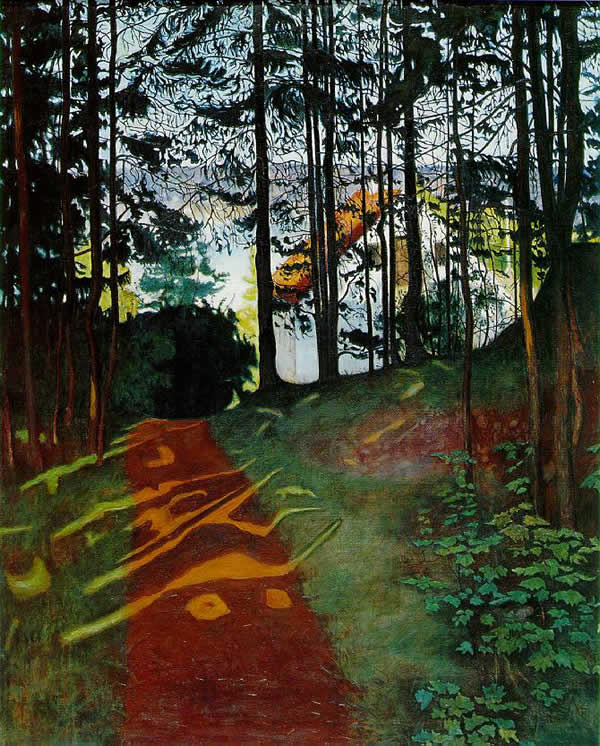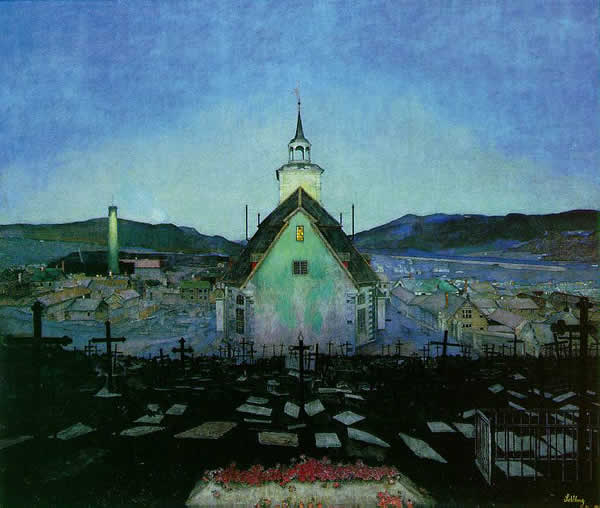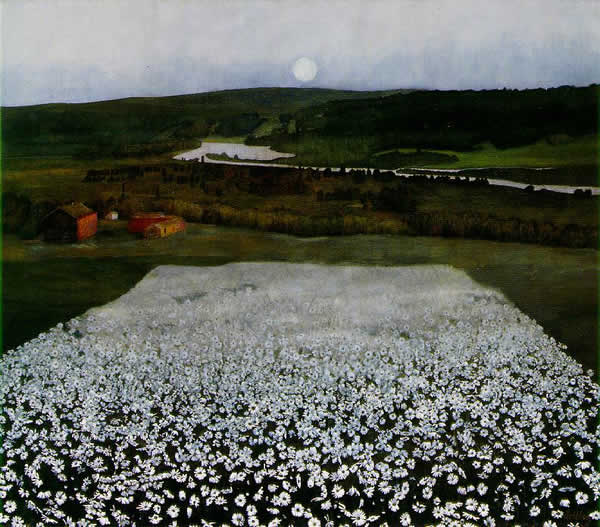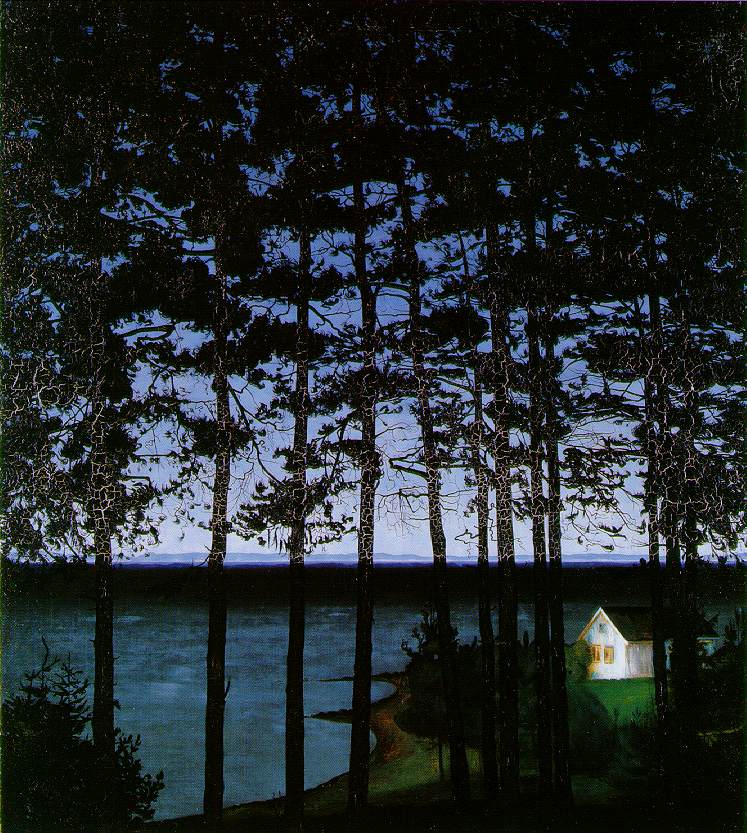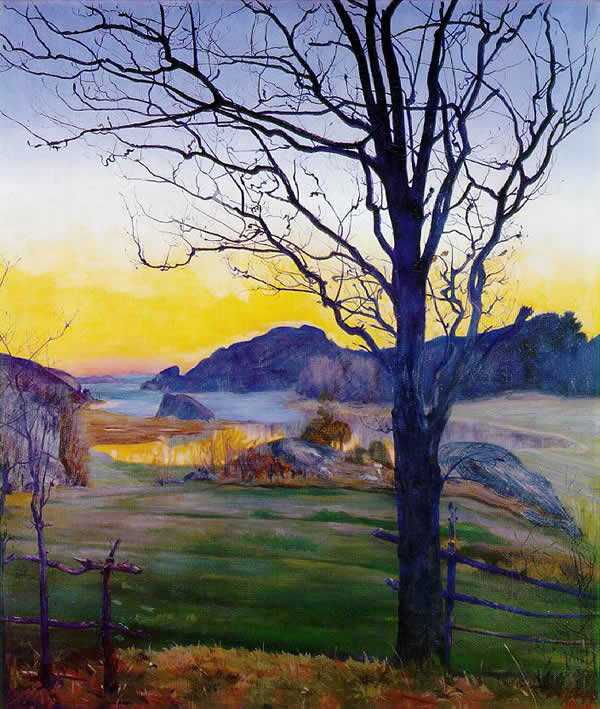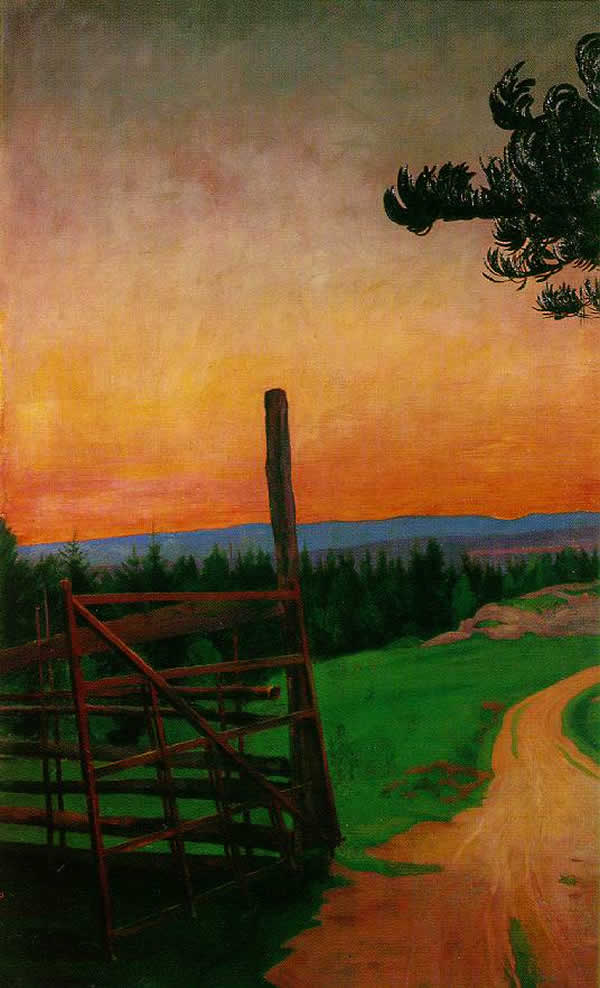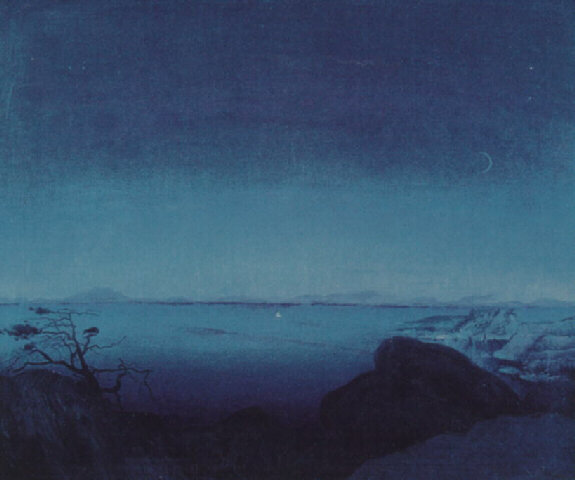Harald Sohlberg
Sun Gleam 1894
Oil on canvas
Night 1904
Oil on canvas
Flower Meadow in the North 1905
Oil on canvas
Fisherman's Cottage 1907
Oil on canvas
Autumn Landscape 1910
Oil on canvas
Country Road 1912
Oil on canvas
Artist Biography:
1869-1935
In an obituary, Pola Gauguin wrote that as an artist, Harald Sohlberg was alone and forgotten: "A name which was famous in its day." Now that Sohlberg was dead, Gauguin thought, "the coldness which he helped surround it with, will thaw." Sohlberg's isolation was partly the tragic result of his wholehearted endorsement of the myth of genius as formulated by Romanticism and adopted by the Symbolists. Like Munch, he was obsessively preoccupied with denying that the influence of other contemporary artists had been important to him. He dissociated himself from the discussion about where he belonged in the history of art, relegating the origins of his artistic awakening outside of art to his own psyche. Sohlberg wrote that his form sprang forth subconsciously from his first awareness of the landscape. The difference in texture of the sky and earth gave him a sense of standing on a heavy and firm planet gazing out into boundless space. He attributed the simple forms and great lines of his pictures to this first awareness of the landscape. The point of departure was the personal experience. Thus, the artist's experience of his subject preceded the picture.
Sohlberg was preoccupied with the concrete local landscape that surrounded him and his emotional reaction to it. The place, in itself, was charged with meaning. For this reason, where he sought his subjects was important. He experienced the landscape in Norway as nature in strong and intense moods and gave form to the echoes of these moods in his mind. He agreed with many of his generation who, taking their point of departure in Andreas Aubert's writings about Norwegian art, were of the opinion that there existed distinctive, Nordic colors, clear and strong colors created by the clear, intense light of the North. once artists realized this, it would be possible for an independent Nordic art to develop. Sohlberg believed that, along with the unique construction of the Nordic landscape, local color ought to result in a style of its own. Experience and interpretation of nature determined the choice of colors. For Sohlberg, the main color should assemble the picture and be as strong as possible.
The function of line in painting according to him was to express feelings. It could be lonely, down to earth, or melancholy. It could be willful and persevering as required. It should be developed according to the nature of the subject and the artist's dialogue with nature. Because the picture was bound by a perceived reality, Sohlberg paid tribute to reality by portraying it naturalistically. But his gaze carried with it the legacy of picture formulas that transformed and adapted nature. He was an artist who rarely put a stroke on the canvas before the picture was clear to him in his imagination. As an artist, he was a substitute viewer. What interested him was his own experience and interpretation, regardless of how naturalistic his pictures appeared to be. Ideally everything in the picture was controlled by his will.
As an older man, Sohlberg longed for confirmation that the public saw the values he wished to impart: "it is probably true that for simple and naive reasons my works have aroused sympathy. But I maintain that they have by no means been properly understood for the pictorial and spiritual values on which I have been working consistently throughout the years." The quotation contains three words which are keys to an understanding of Sohlberg: "Pictorial," "spiritual," and "consistently." The pictorial is means for expressing the spiritual, and one was obliged to stick to the spiritual values one held true.
- From Ivind Storm Bjerke, Edvard Munch, Harald Sohlberg: Landscapes of the Mind
Andante 1908
Oil on Canvas laid on Canvas
16.1 x 19.3 in. / 41 x 49 cm.
Johan Sebastian Bach
Suites For Unaccompanied Cello No.1 in G, BWV 1007
G-dur . en sol majeur
1. Prelude 2. Allemande 3. Courante
4. Sarabande 5. Menuets I-II 6. Gigue
http://usoc.snu.ac.kr/music-site/bach/gendron/o1.mp3
http://www.photoartreproduction.com/Artists/Artists/Sohlberg_Harald.html
'Blue > e—art—museum' 카테고리의 다른 글
| Art of the Korean Renaissance 1400-1600 한국 르네상스시대의 예술 (0) | 2009.04.05 |
|---|---|
| Old School Bad Boy’s Messy World - Francis Bacon (0) | 2008.09.26 |
| Nothing can restrict Fine Art no rules painting (0) | 2008.08.06 |
| Attraction of Man with Art (0) | 2008.08.02 |
| 張大千 Zhang Daqian Chang Dai-chien Ta-ch'ien Chang 장대천 (0) | 2008.04.07 |
